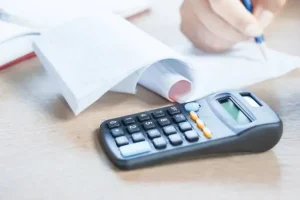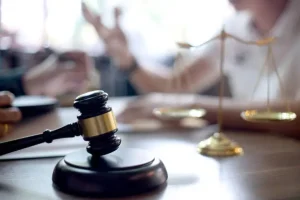Bad debts are those that are classified as not fully recoverable due to the debtor’s inability to meet their obligations, whether due to bankruptcy or the debtor’s absence. These debts have a significant impact on the financial performance of companies and banks, as they are recorded as expenses that reduce profits. Despite being written off from financial records, there are still legal attempts to recover them, such as filing lawsuits.
From a legal perspective, bad debts are dealt with through a set of procedures aimed at attempting to recover the money owed despite being classified as uncollectible. In this article from B2B Debt Collection, we detail what bad debts are and the most important steps taken to collect this type of debt.
What is Bad Debt?
When your company faces bad debts, it means you are certain that these debts will not be recovered, such as when the debtor company declares bankruptcy and lacks sufficient assets to cover the debts, or when resorting to settlements is unsuccessful. In such circumstances, these debts are removed from financial records and considered a final loss.
Bad debts are amounts owed that are difficult or impossible to collect, whether from companies or individuals. This typically occurs when a debtor loses the ability to pay due to bankruptcy, or if they cannot be reached due to their disappearance or insufficient information about them.
In some cases, the debtor’s refusal to settle or comply with legal terms may be the primary reason for a debt being deemed bad, despite a clear legal obligation. Loopholes or a lack of legal procedures may result in the inability to effectively pursue the debtor, making pursuing the case futile. Below, we explain where these debts appear and what bank debts are.
Ready to recover your company’s rights in the quickest and easiest way? Let us help you manage your bad debt collection professionally and securely. Contact us now for a free consultation on how to prove and address your overdue debts.
Where do bad debts appear?
Bad debts are usually presented under selling expenses on the income statement, under a heading such as “Bad debt expense” or “Uncollected receivables expense.” This measure is essential because it accurately reflects the company’s financial position. It helps provide a clear picture of the status of receivables and directly impacts the net profit presented in financial reports. Learn about bad debts.
What does bad debt mean in banks?
Bad debts in banks are debts that are permanently uncollectible, whether due to the debtor’s bankruptcy or inability to pay. Banks address these debts by recording them as an expense in the financial statements, which reduces profits. In addition, banks allocate reserves to mitigate the risk of uncollectible debts. Despite writing off these debts from their accounts, banks may continue to attempt to recover the funds through legal means or amicable negotiations.
These debts pose a significant financial obstacle to banks, negatively impacting their ability to provide the liquidity required for lending, which negatively impacts the economy as a whole.
Read also: Bad Debts and Doubtful Debts
What is the nature of bad debt accounts?
Bad debts in accounting reflect amounts owed that are not expected to be collected from customers due to their default or bankruptcy. These debts are treated by writing them off as a loss in the financial records and recording them as an expense in the profit and loss statement. However, a bank or company may maintain a provision for doubtful debts as a precautionary measure.
There are several methods for estimating the value of doubtful debts, such as:
Relying on a percentage of credit sales
Analysis of the aging of receivables
This estimate is based on past experience, the type of customer, and the surrounding economic conditions.
When the debt is finally written off, legal steps are taken, if necessary, to attempt to recover it. If the bad debt is later collected, the financial provisions previously prepared are adjusted to accommodate this unexpected payment. Here are the best methods for handling bad debts from B2B debt collection.
Read also: How to create a debt collection schedule and what is the collection percentage
What are the methods for dealing with bad debts?
Dealing with bad debts involves a set of legal and financial measures that help recover the debt. The first step is to go to court, where the creditor files a lawsuit against the debtor to recover the debt, especially in cases involving large sums of money. After a judgment is issued, proceedings can be taken against the debtor’s available assets to ensure the debt is recovered.
First: Accounting Methods for Dealing with Bad Debts
In addition to legal procedures, the accounting treatment of bad debts relies on two main methods:
The direct method: This involves writing off the entire debt if it is impossible to collect.
The indirect method: This relies on creating provisions for doubtful debts to reduce the negative financial impact.
The problem can also be resolved amicably through negotiation between the two parties, including debt rescheduling or the creditor offering financial concessions to recover part of the debt.
Second: Legal Methods for Dealing with Bad Debts
Judicial Settlement: If the debtor is unable to repay the debt in full, the two parties can reach a settlement through the court. The two parties agree to reschedule the debt or reduce the amount owed to suit the debtor’s financial capacity.
Arbitration: If an arbitration clause is included in the contract between the creditor and debtor, this method can be used to resolve disputes more quickly than traditional court proceedings, facilitating the settlement of debt-related disputes.
Executive Seizure: After a court ruling is issued in favor of the creditor, they can request the seizure of the debtor’s property or assets to secure the recovery of the outstanding debt.
Debt collection procedures for companies help creditors legally recover their rights and reduce losses resulting from bad debts.
How are bad debts proven?
Proving bad debts requires following a set of legal procedures that confirm the uncollectibility of the debt. The creditor must provide evidence that the debt is no longer collectible, through documents such as court rulings declaring the debtor bankrupt or any other documents proving that all available means of collecting the debt have been exhausted.
The necessary documentation related to the debt includes all contracts, invoices, and written statements from the debtor. If a debtor declares bankruptcy, this is considered legal evidence that allows the creditor to write off the debt as a deduction.
In addition, obtaining a court ruling confirming the debtor’s inability to pay can help prove the debt is bad. This may require evaluating the debtor’s available assets, which may be insufficient to recover the debt.
Also, if the statutory statute of limitations expires without a claim for collection, the debt may be deemed bad. These procedures provide legal protection for the creditor, enabling them to prove that the debt is no longer collectible, which impacts the accounting for this debt.
Where do bad debts appear on the income statement?
Bad debts appear on the income statement as an expense that impacts a company’s net income. When the debt is determined to be uncollectible, it is written off and recorded as an expense, resulting in a decrease in profits.
There are two main methods for dealing with these debts:
Direct method: The debt is written off directly when it is determined to be uncollectible, which is recorded as an expense on the income statement.
Indirect Method: Requires the creation of a provision for doubtful debts, determined as a percentage of sales or accounts receivable. This provision is also recorded as an expense on the income statement, impacting profits.
If bad debts exceed the provisions, the difference is recorded as an additional expense, negatively impacting net profits for the year. Learn how to collect bad debts in B2B Debt Collection.
How are bad debts collected at B2B?
This type of debt is handled systematically at B2B Debt Collection to ensure the maximum possible recovery. Here’s how it’s done:
Direct Communication: We typically begin by contacting debtors directly to remind them of their payment. This includes identifying the reasons for the delay and opening a dialogue channel to resolve the issue.
Formal Letters: We send formal letters reminding debtors of the due date, as well as the potential consequences of non-payment. These letters are an important legal step to demonstrate our efforts.
Amicable Collection Procedures: We handle bad debts through negotiation and appropriate pressure strategies.
Legal Procedures: In extreme cases, legal action may be sought by filing a complaint with the relevant authorities. This requires strong evidence that all previous attempts to collect the debt have failed.
Documentation: We maintain accurate records of all collection attempts and actions taken to write off the debt, which is crucial. This helps confirm the efforts made if the company decides to go to court or to improve internal collection strategies in the future.
Through these steps, companies can improve their chances of recovering bad debts by working with B2B Debt Collection Services, which contributes to enhancing their financial stability.
Contact us now and start taking the right steps to recover your company’s bad debts!
Frequently Asked Questions:
The most important frequently asked questions you may need to know about collecting bad debts for your company include:
How are bad debts processed?
Bad debts are processed through legal and accounting steps. The company must ensure that the debt is uncollectible after exhausting all possible means. The debt can then be written off from the accounting records after obtaining the necessary approval from senior management, while maintaining records of all collection attempts.
What are the conditions for writing off a debt?
The conditions for writing off a debt include uncollectibility, where all attempts to collect the debt must be proven unsuccessful. The debt must also exceed a certain period of time, often 180 days, and senior management approval is required for the writing-off.
Who is responsible for bad debts?
Bad debts are borne by the indebted company that is unable to recover its receivables. These debts are written off as an expense on the income statement, impacting the company’s net profits. The company’s investors and shareholders also bear a portion of the impact of these debts on profits.
Is it possible to collect bad debts from the customer?
In some cases, attempts can be made to collect bad debts from the customer by resorting to collection agencies or taking legal action. However, this depends on the debtor’s ability to repay and the means available to collect the debt.
Why do companies use the allowance method to calculate bad debts?
Companies rely on the allowance method to estimate bad debts because it enables them to regularly set aside provisions for doubtful debts. This method helps reduce the negative financial impact of bad debts on profits and aids in more accurate financial planning.
Are bad debts a debit or a credit?
Bad debts are considered a “debit” because they represent amounts owed to the company that have not been recovered. When written off, they are recorded as an expense on the income statement, reducing net profits.
What are the procedures for collecting bad commercial debts in Saudi Arabia?
Collecting bad commercial debts in Saudi Arabia involves procedures such as sending official letters, resorting to collection agencies, and taking legal action if the debtor does not respond. There are specific laws and procedures governing these processes to ensure creditors’ rights..





